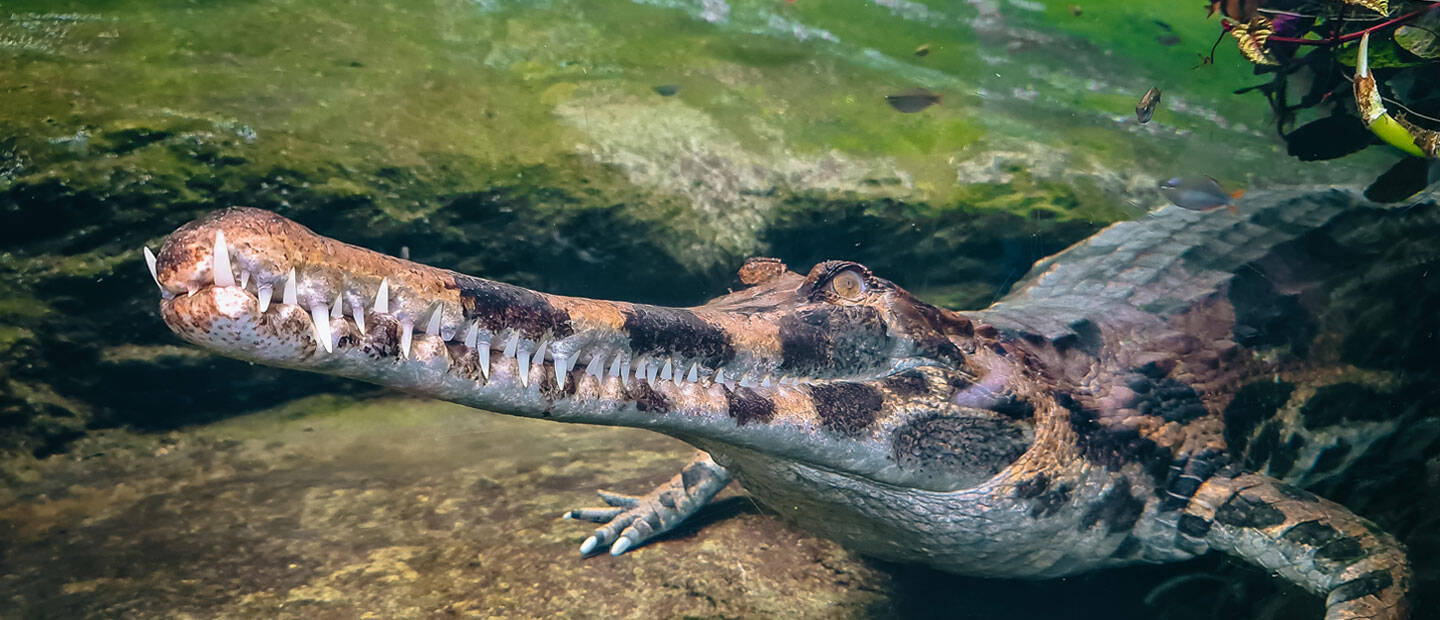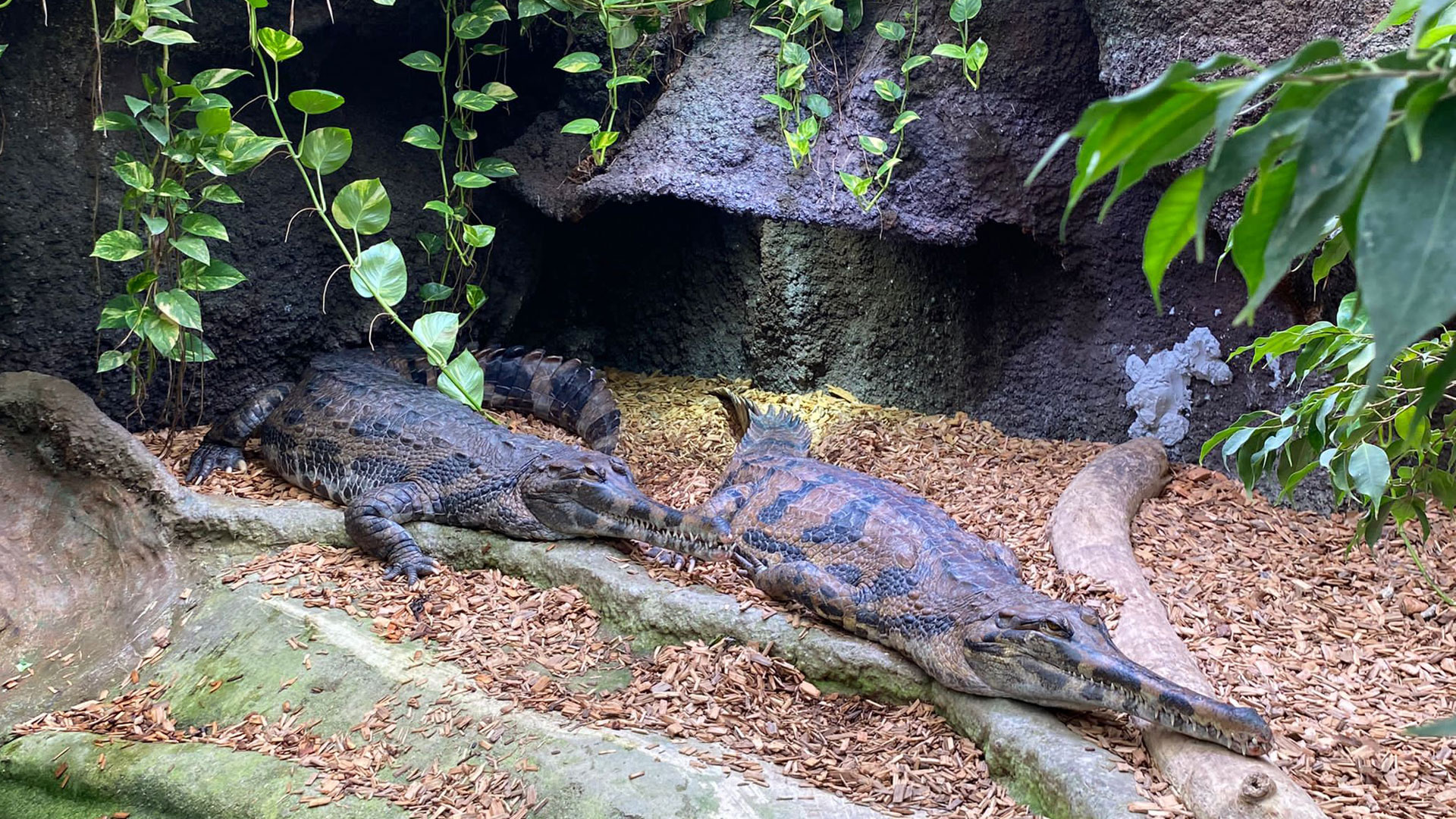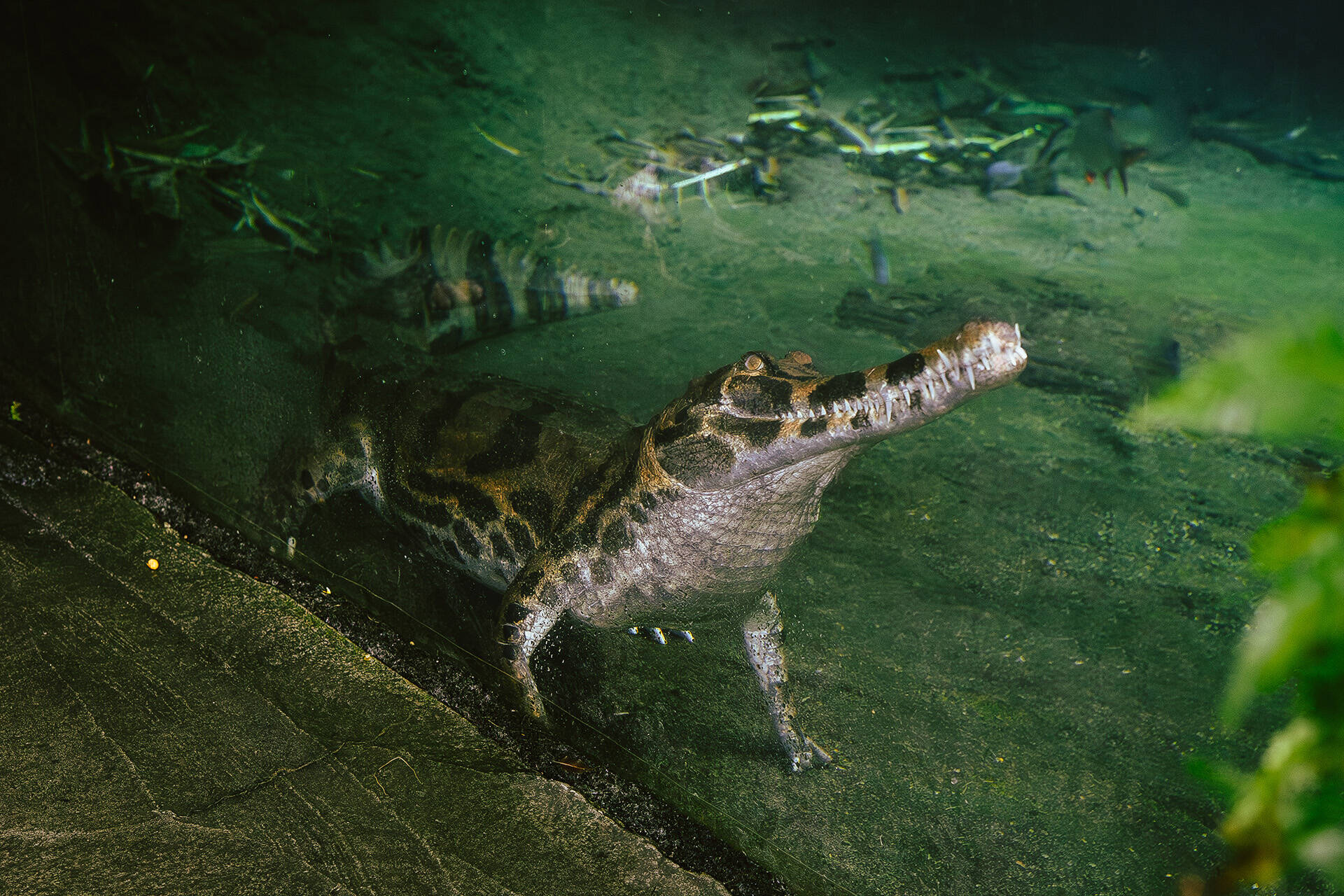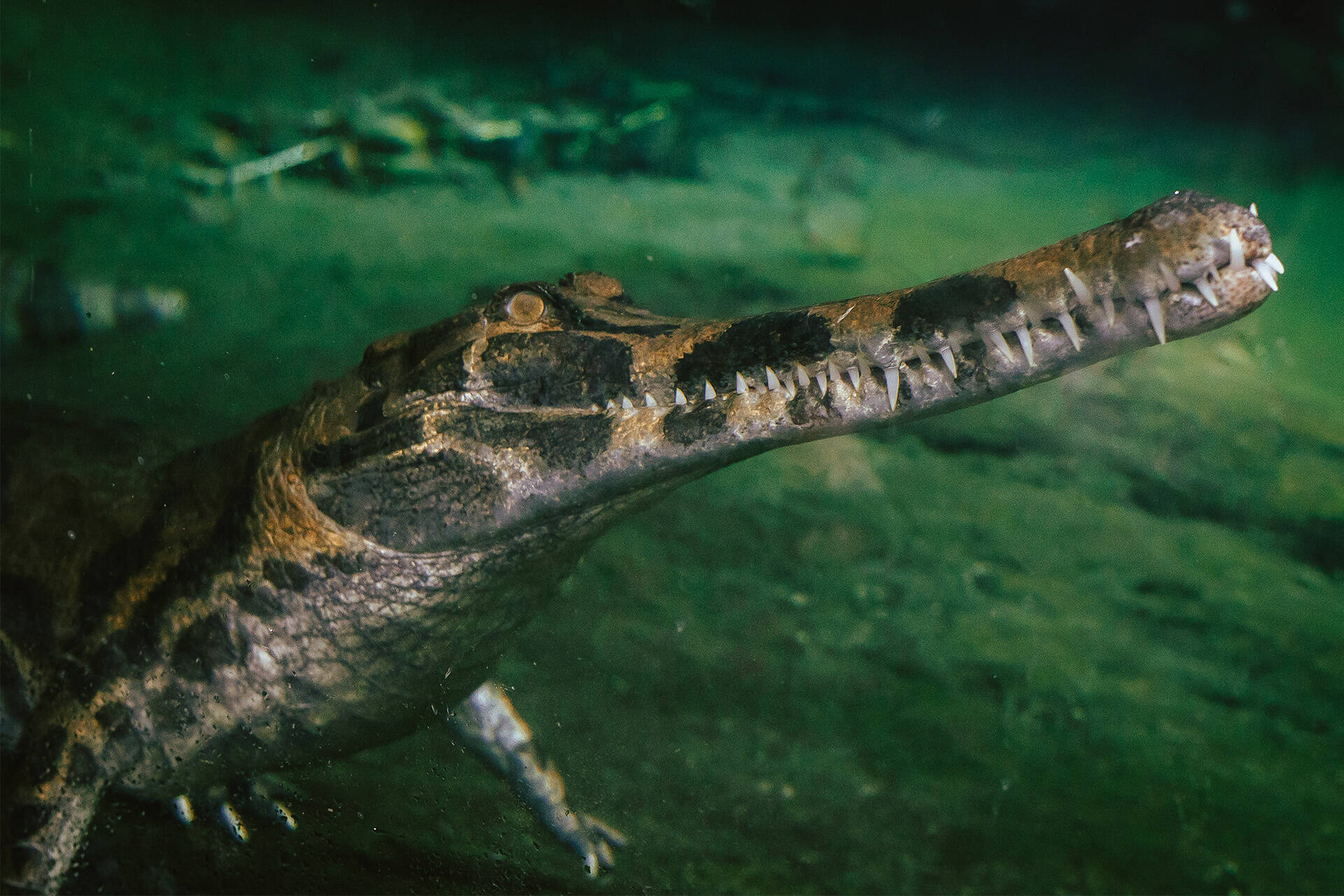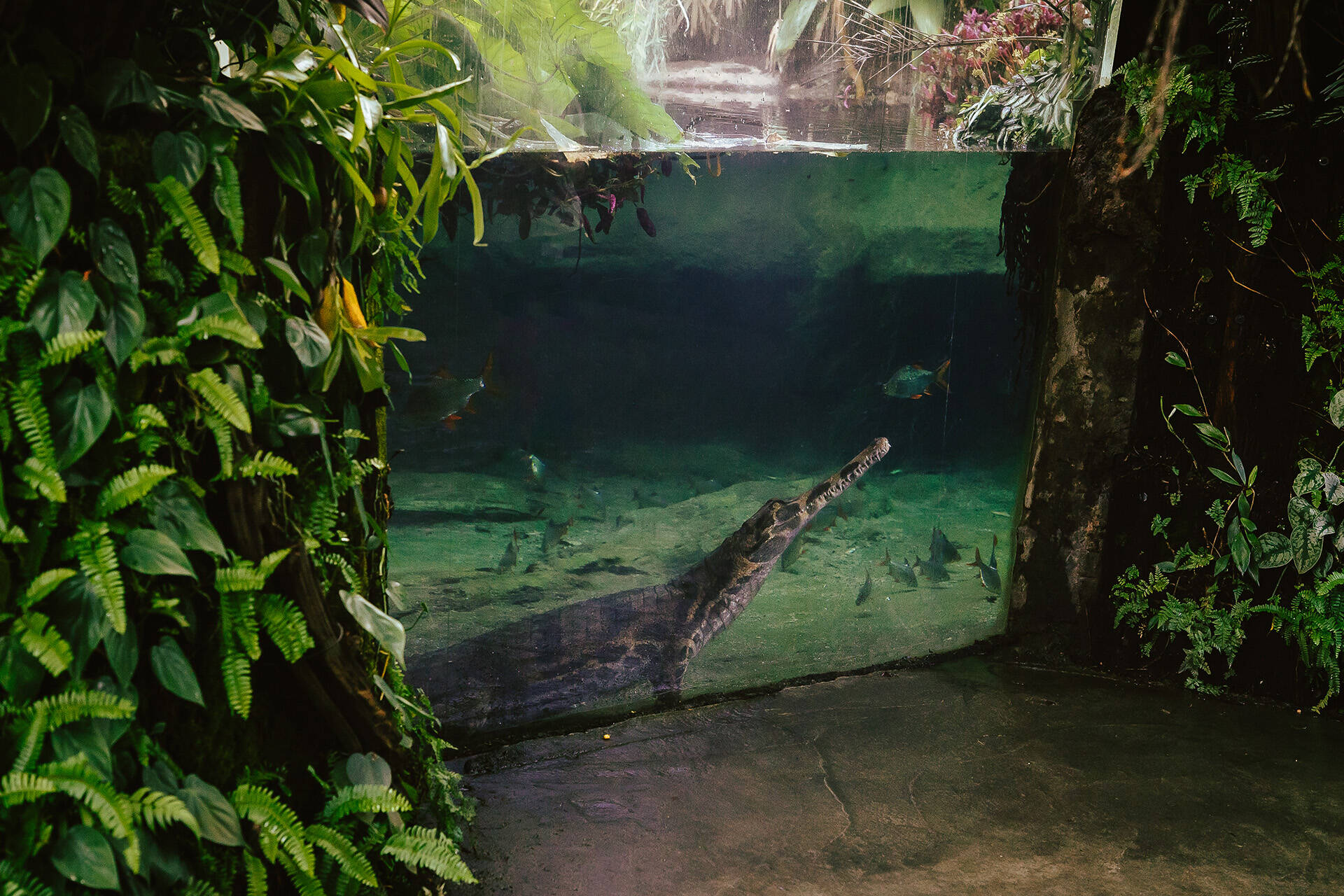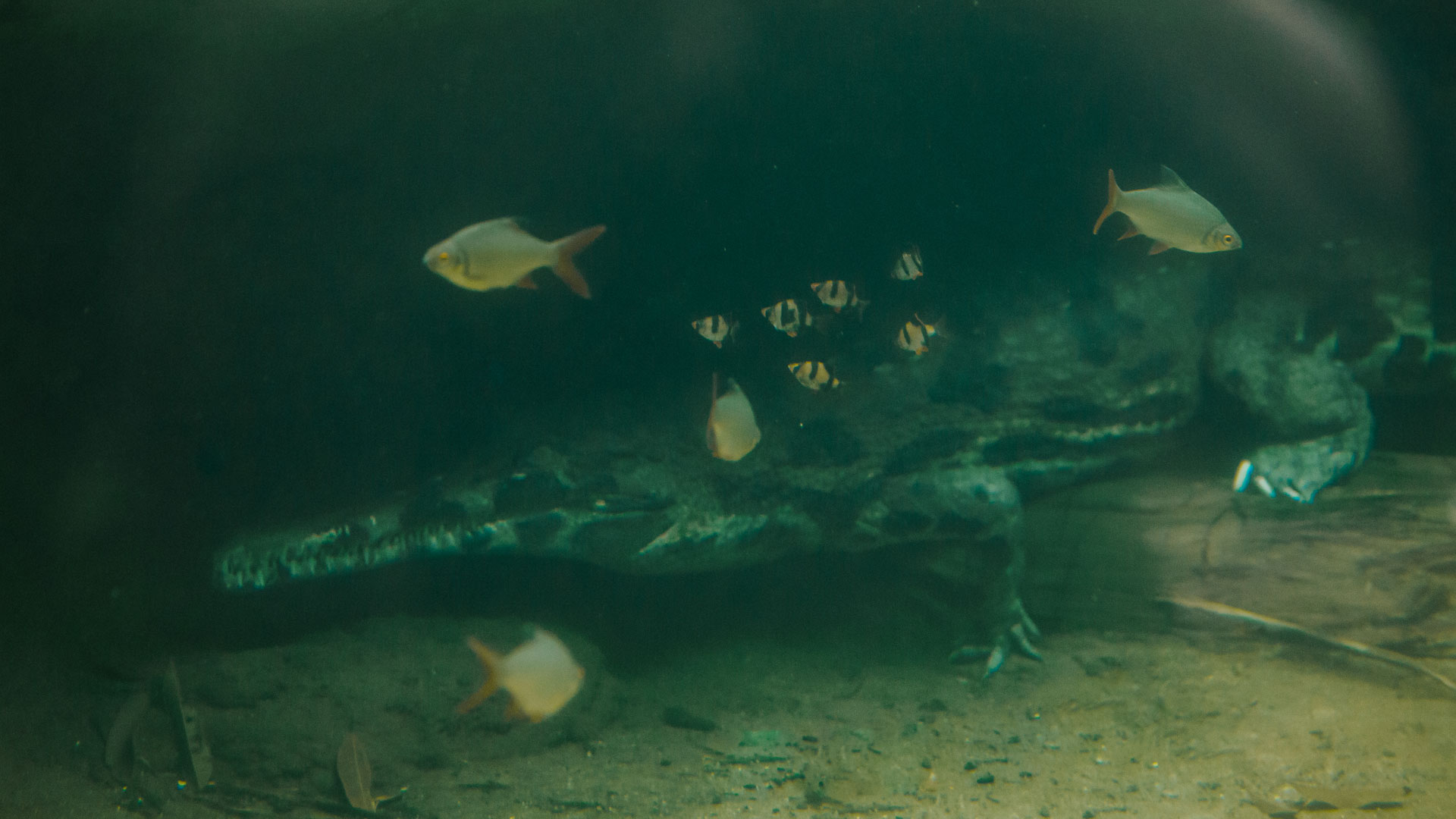What a long snout you have my dear!
Perhaps the most enigmatic of crocodilians, the Sunda gharial is both mysterious and extraordinary. Also known as tomistoma or false gharial it is a fresh water crocodile, one of the world’s largest crocodilian species and is renowned for its distinctive, slender snout. It is rarely seen as it is very shy and secretive in nature, and well camouflaged within the dense lowland peat and swamp forests it inhabits.


